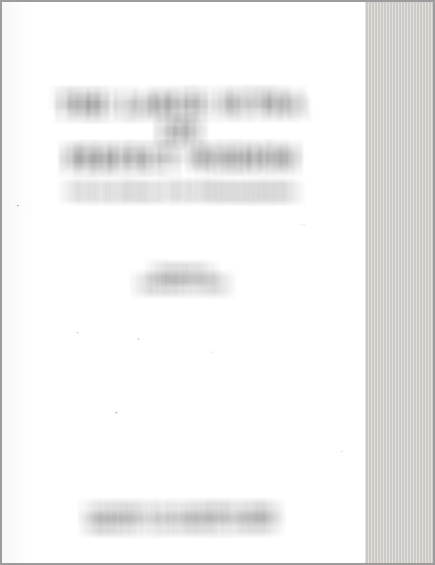Panchatantra: A reflex of Arthashastra
by M. N. Indrani | 2003 | 42,495 words
The essay studies the Panchatantra in relation to the Arthashastra by proposing that that Indian fable literature divides into educative and entertaining narratives, both traced back to the sacred Vedic texts. It highlights the 'Pancatantra' and its kin as representative of educative stories promoting ethical conduct and worldly wisdom through tale...
Nitikatha Sahitya in Post-Vedic Period
As far as the elements of fable literature in the post-Vedic period is concerned, one may trace the Aranyakas and the Upanisads as being its sources. Of course there are some fragments of fable literature in the Aranyakas; while the Upanisads are the systematic texts wherein significant University
6 elements of fable literature are available. One might say that in the post-Vedic period a preceptor used to instruct his disciples the teachings of Vedanta by means of narrating a relevant story in order to attract the mind of the disciples. Hence even the major Upanisads known for their philosophical doctrines, abound in narrative aspects. In this context, the Talavakara Upanisad belonging to a branch of the Samaveda, opens with narration of a legend in a dialogue form. Here, a dialogue between Supreme Brahman in the form of Yaksa and the gods like Agni, Vayu, Indra, Siva, Brahma, etc. makes it evident that one should not be proud of one's own prowess, whether be mundane or divine. No doubt, gods won victory over demons due to the impelling power of the Supreme Brahman. As gods were puffed up with ignorance, they could not realize the truth in their victory. But the Lord made them known of the reality. Thus the part of this dialogue gives a lesson on the moral teachings. The moral precept suggested here is not being proud of one's own riches. Further, the Katha Upanisad, belonging to Katha branch of Krsnayajurveda reads an interesting story of Naciketa, which also occurs in the Taittiriya Brahmana [3.1.8] and in the Anusasana-parva of the Mahabharata. In this story, Naciketa is characterised as an extraordinary guest of god Yama. At the outset of the upanisad, Uddalaka is seen as performing Visvajit sacrifice wherein he is engaged in giving away the useless cows
7 to the brahmins as gift. An young lad Naciketa did observe this, could not sustain himself, and hence spoke out some words to make his father alert. Being incensed, Uddalaka cursed him to go to death. No doubt, a curse of elderly person like Uddalaka leads to the welfare of a cursed person. As such, Naciketa went to Yama and was blessed with three boons. The first boon pertains to the welfare of his father who had cursed him; the second and third boons pertain to the science of Brahman. Thus, Naciketa became a man of wisdom. Though his father was quite unfair to him, Naciketa asked Yama for the welfare of his father. Here exactly the goodness of Naciketa lies. Thus, Naciketa's story in the Kathopanisad is quite appealing even to the young generation of the modern times. Next, in the Prasnopanisad, six students aspiring for the knowledge of Brahman got together and approached Pippalada for initiation into the teachings of Brahman. However, Pippalada imparted the knowledge of Brahman to them, on the basis of the examples of the world phenomena. The Chandogya Upanisad (1.8.9) reads a story of Pravahana belonging to a Ksatriya class, and he instructs the teachings of Brahman to two brahmin-disciples, by name Silaka. and Caikitayana. This story begets the idea that in post-Vedic period, there was no restriction to receive higher knowledge from a low class but highly qualified person. It tends to show the broad-mindedness of the people of that period. Uni city
8 The same Upanisad (1, 10, 12) reads a story of UsastiCakrayana. This story indicates that an acceptance of a prohibitive food, when one's life is at stake, does not incur any taint of sin, rather he remains as pure as Agni or Surya. Another story of Janasruti and Raikva is narrated in the Chandogya Upanisad (IV adhyaya). Herein, Janasruti being king approaches Raikva in due manner and he taught the king the philosophy of Brahman after examining his intellect. So also, the story of Satyakama Jabala is narrated wherein sage Gautama instructs him. The way in which Gautama reads the heart of Satyakama is marvellous. Before being taught by his preceptor, Satyakama was blessed with supreme knowledge by the gods into forest. But he remained before his preceptor with all modesty. Being pleased, Gautama taught him the science of Brahman. In this manner, the story of Upakosala, Svetaketu, Upamanyu, Gargi, Maitreyi and so on have been delineated in the Chandogya and Brhadaranyaka Upanisads. Thus it is clear, telling the stories for the object of achieving the goal had been in practice even during the post-Vedic period.
